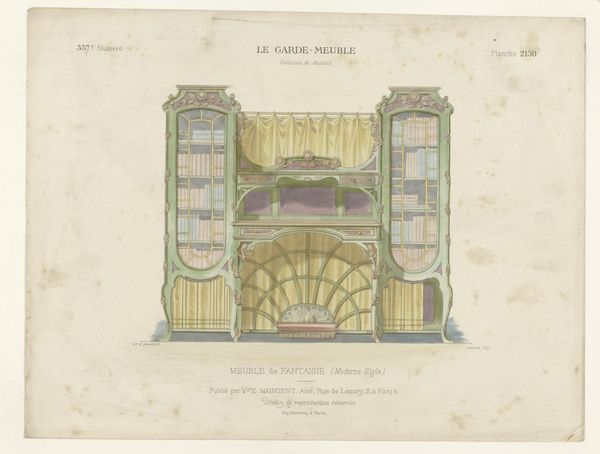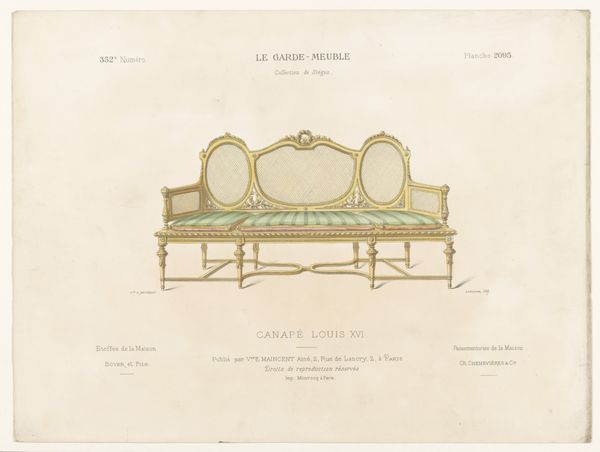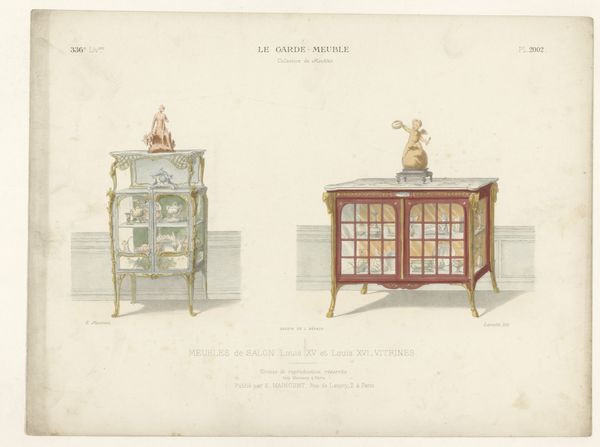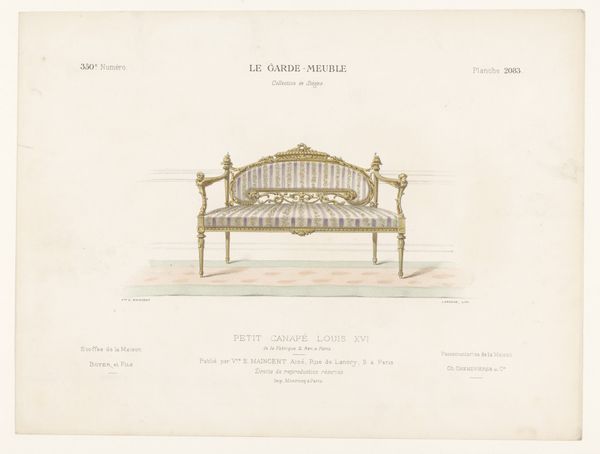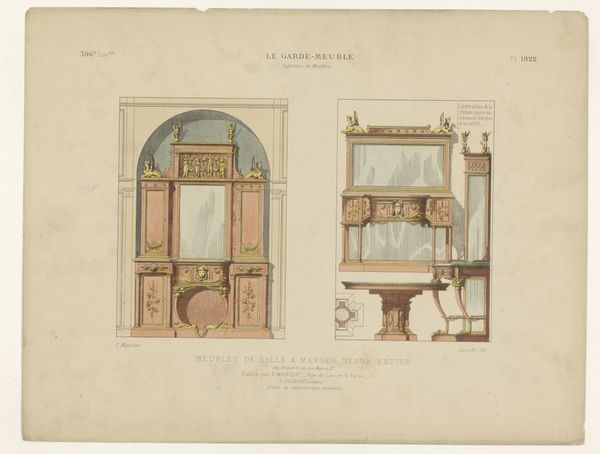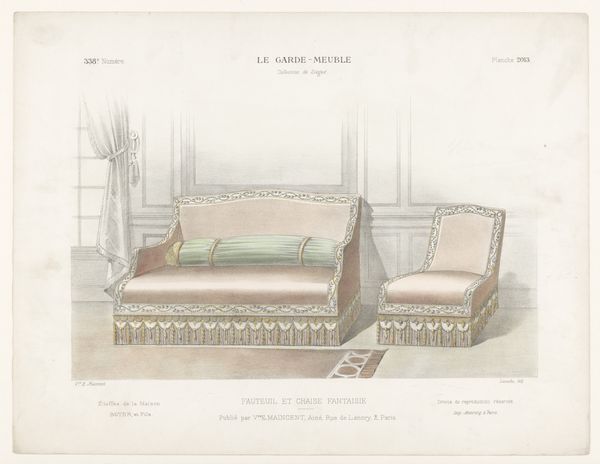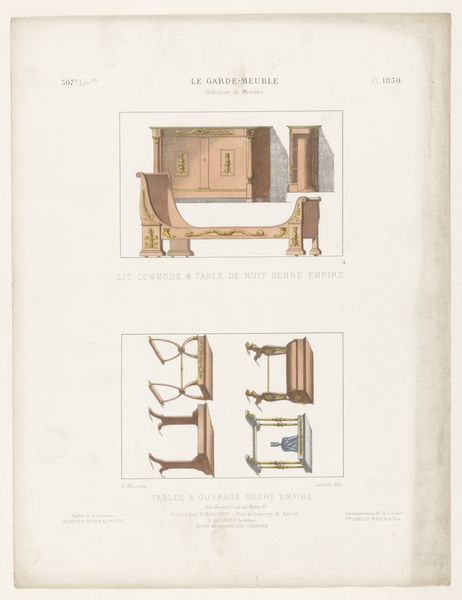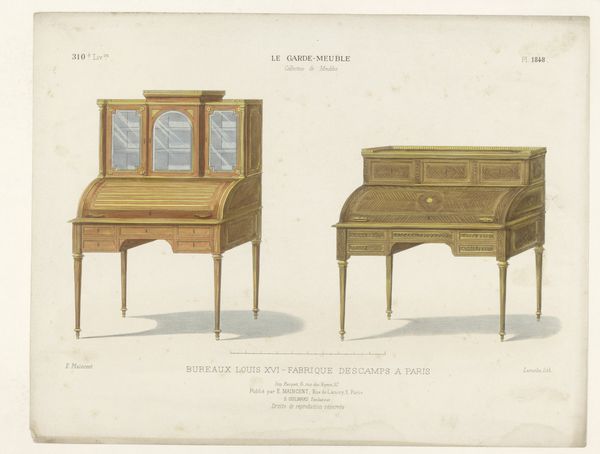
drawing, print, paper
#
drawing
#
art-nouveau
# print
#
furniture
#
landscape
#
figuration
#
paper
#
decorative-art
Dimensions: height 277 mm, width 358 mm
Copyright: Rijks Museum: Open Domain
Curator: This lithograph is titled "Hoekbank" and it's a drawing or print on paper, probably from somewhere between 1895 and 1935, attributed to Léon Laroche. Its designation within decorative arts categorizes the piece but offers a somewhat constrained appreciation of it. Editor: It strikes me as more whimsical than strictly decorative, with the light palette of greens and yellows suggesting an almost theatrical set design. I wonder, could this elaborate corner seat, designed for a library, signify more than mere domesticity? Perhaps a quiet rebellion by women seeking solace and space in a patriarchal era? Curator: While that's a valid socio-historical reading, note how the arrangement of forms follows a rigorously organized structure. Consider the geometric precision—the mirroring of the shelving units, the careful repetition of rectangular shapes. This evokes more rationalist forms, akin to early modernist designs of furniture where function is dictated by visual design. Editor: I appreciate that structure. But given its fin-de-siècle time frame, isn’t there space to consider that this design offered women autonomy of thought in a private reading room setting? The piece speaks to the idea of intellectual sanctuary for women. Even the decorative frieze of floral decoration above seems evocative of their sheltered lives at the time. Curator: I recognize the thematic connection you draw, but consider also that the print demonstrates a command of linear perspective. The vanishing points, the way the planes recede… these elements create an intricate visual pattern in themselves, aside from representational elements. The three plates lined up above further reinforce these compositional choices, contributing an additional layer to the meticulous design. Editor: I think to divorce form and sociopolitical context sells short the work's profound implications. Imagine a woman ensconced here, reclaiming agency within her opulent cage, challenging convention through silent discourse with literature. This piece isn't a chair. It's a silent revolution for change! Curator: Your view certainly invites a crucial reading, acknowledging social undertones perhaps not immediately obvious. Editor: And your focus on its aesthetics challenges me to refine mine. Thank you!
Comments
No comments
Be the first to comment and join the conversation on the ultimate creative platform.
